When it comes to choosing the perfect tires for your vehicle, the Bridgestone vs Goodyear debate has been ongoing for years.
In this post, I’ll delve into their rich histories, put their dry, wet, and snow performances to the test, analyze their mileage warranties, average lifespan, prices, and uncover their pros and cons.
By the end, we’ll determine which brand reigns supreme in the tire industry.
Let’s dive in!
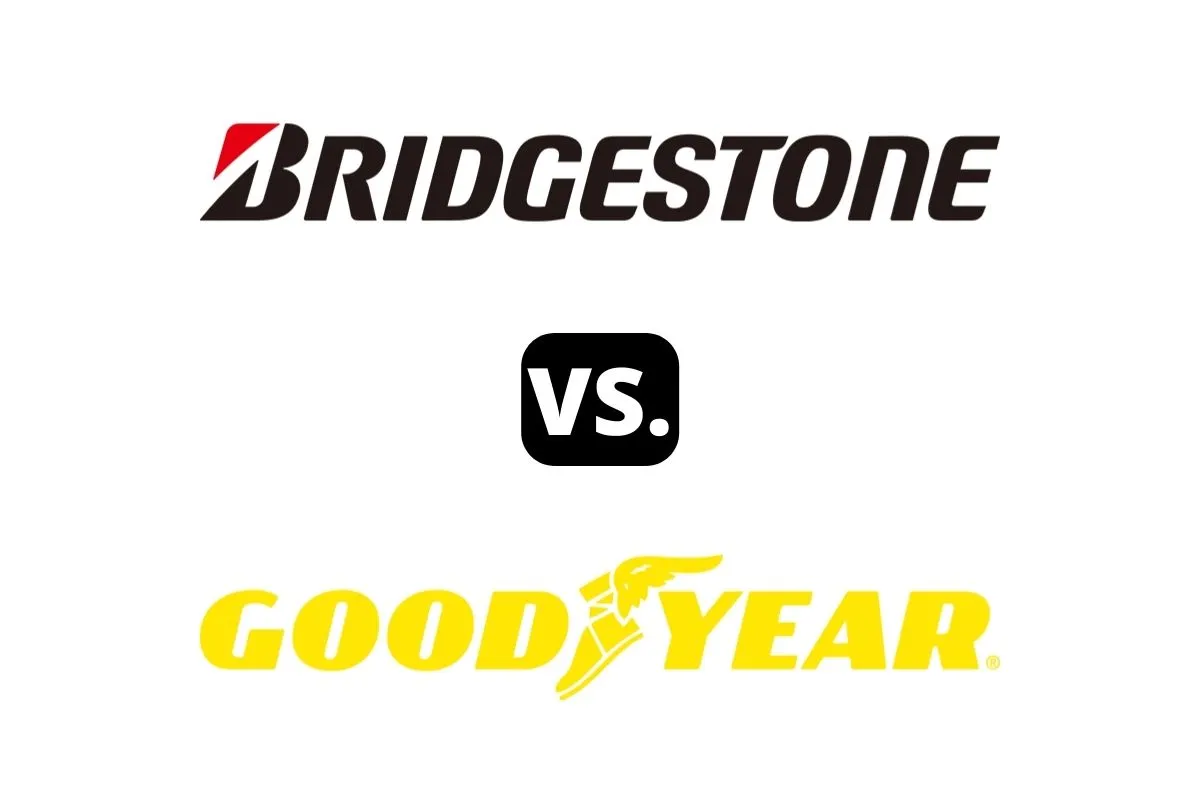
Bridgestone vs Goodyear – Comparison Table
| Bridgestone | Goodyear | |
| Country of Origin | Japan | United States |
| Year Founded | 1931 | 1898 |
| Made In | United States, Canada, Mexico, Costa Rica, Brazil, Argentine, Belgium, Spain, Poland, Italy, Hungary, Russia, Turkey, South Africa, Thailand, Indonesia, Taiwan, Vietnam, India, China, Australia, or Japan | mostly in Akron, United States, but the company also has factories in Venezuela, India, Turkey, and Malaysia |
| Parent | Ishibashi family (Japan) | The Goodyear Tire & Rubber Company (USA) |
About the Brands

1. Bridgestone
Bridgestone, a renowned tire brand, originated in Japan in 1931 and is currently owned by the Ishibashi family.
The company was founded by Shojiro Ishibashi, who aimed to produce high-quality tires for automobiles and other vehicles.
Over the years, Bridgestone has established itself as a global leader in the tire industry, offering a wide range of innovative and durable products.
Bridgestone’s success can be attributed to its commitment to research and development, allowing the brand to continually introduce new technologies and advancements.
The company’s focus on quality and performance has made it a trusted choice for drivers worldwide.
Bridgestone tires are known for their superior grip, durability, and excellent handling in various road conditions.
With a strong presence in both the consumer and commercial markets, Bridgestone has expanded its operations globally.
The brand has manufacturing facilities in numerous countries, enabling it to meet the growing demand for its products.
Bridgestone’s commitment to sustainability is evident through its eco-friendly initiatives, including the development of fuel-efficient tires and recycling programs.
Through its long and successful history, Bridgestone has cemented its position as one of the most respected and reliable tire brands, offering drivers safety, performance, and comfort on the road.
Mostly Known for Manufacturing Tires For:
- Passenger cars
- Trucks
- Buses
- SUVs (Sport Utility Vehicles)
- Crossovers
- Performance vehicles
- Sports cars
- Off-road vehicles
- All-terrain vehicles
- Commercial trucks
- Agricultural vehicles
- Construction equipment
- Mining equipment
- Motorcycles
- Aircraft
2. Goodyear
The Goodyear brand, founded in 1898 in the United States, is a renowned tire manufacturer and a subsidiary of The Goodyear Tire & Rubber Company.
It has a rich history that spans over a century.
Goodyear has consistently displayed a commitment to innovation, quality, and performance.
Throughout the years, they have developed groundbreaking technologies and patented tire designs that revolutionized the industry.
The brand’s success can be attributed to its dedication to providing reliable tires for various vehicles, including cars, trucks, motorcycles, and aircraft.
Goodyear’s products have garnered a reputation for their durability, traction, and superior handling.
Over time, the company has expanded its global footprint, establishing a strong presence in numerous countries.
Today, Goodyear remains a trusted and respected name in the tire industry, continuously pushing boundaries to meet the evolving needs of consumers worldwide.
Mostly Known for Manufacturing Tires For:
- Passenger cars
- SUVs (Sport Utility Vehicles)
- Light trucks
- Commercial trucks
- Buses
- Motorcycles
- Racing cars
- Farm equipment
- Heavy earth-moving machinery
- Aircraft
- Bicycles
Differences
1. Dry Performance
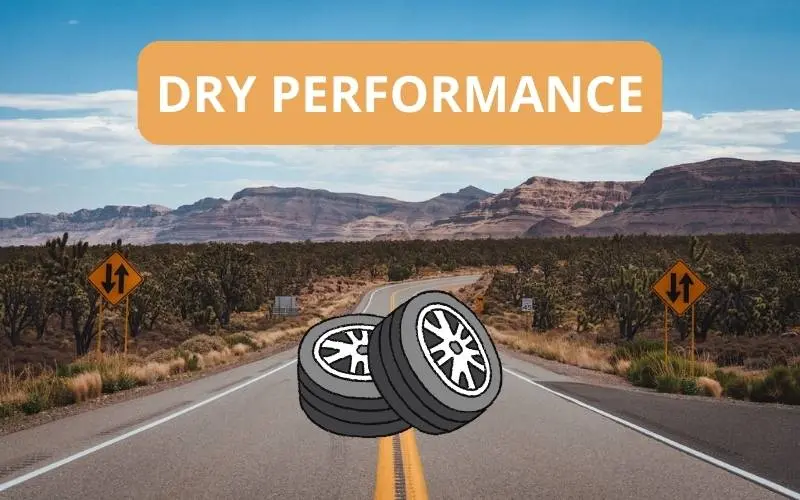
I’m going to compare the performance of two summer tires as they are the ideal type in dry weather.
I’m taking a look at the Bridgestone Potenza RE-71R vs the Goodyear Eagle F1 Asymmetric 3.
In my evaluation, the Bridgestone Potenza RE-71R earns a dry performance rating of 4.8 out of 5.
This tire exhibits exceptional dry traction and grip, above-average cornering and braking abilities, while being specifically designed for dry and damp conditions.
Its aggressive nature and outstanding dry traction on the track further reinforce its impressive dry performance.
On the other hand, the Goodyear Eagle F1 Asymmetric 3 receives a rating of 4.5 out of 5 for its remarkable dry performance, including short dry braking distance, good handling speed, and commendable dry traction.
Considering my ratings, the Bridgestone Potenza RE-71R emerges as the superior choice for dry performance.
2. Wet Performance
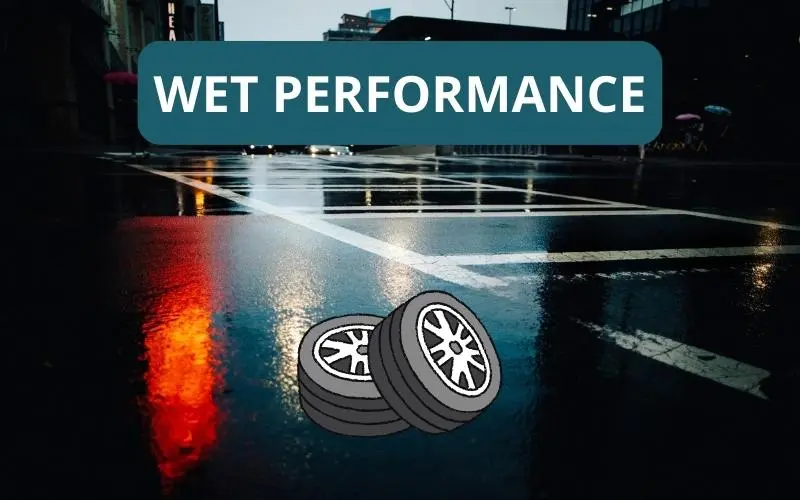
For the wet performance, I’ll be comparing the Bridgestone Potenza RE980AS+ vs the Goodyear Assurance WeatherReady.
Based on my research and personal wet performance rating, I would rate the Bridgestone Potenza RE980AS+ with a 4.6 out of 5.
It has received accolades for its excellent wet traction, thanks to features like wide circumferential grooves and lateral notches that effectively evacuate water, reducing the risk of hydroplaning.
The Goodyear Assurance WeatherReady, on the other hand, received a 4.3 out of 5.
While its asymmetric tread pattern and traction grooves suggest reliable wet traction, the positive feedback on handling and traction on wet roads further supports its wet performance.
Therefore, the Bridgestone Potenza RE980AS+ emerges as the better tire for wet performance.
3. Snow Performance
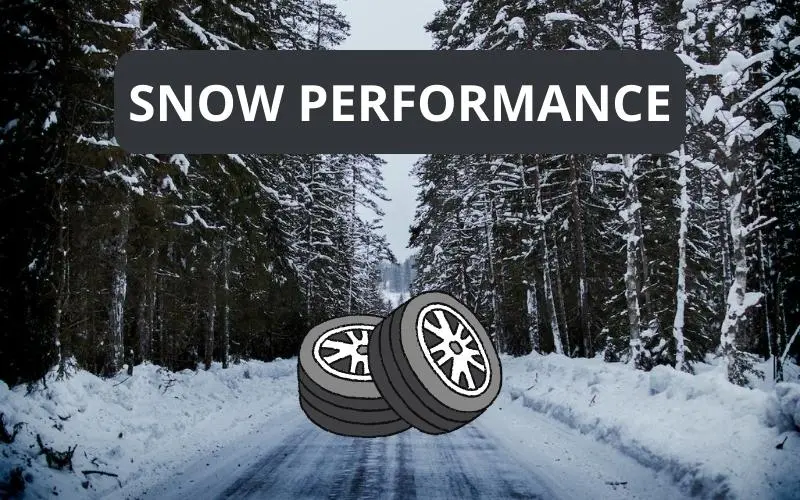
We all know that you need dedicated winter tires if you’re going to be driving on harsh winter conditions.
That’s why I’ll be comparing the snow performance of two specialized winter tires – Bridgestone Blizzak WS80 vs Goodyear Ultra Grip Ice WRT.
Based on my research and personal snow performance rating, I would give the Bridgestone Blizzak WS80 tire a score of 4.7 out of 5.
This tire offers excellent snow performance, with a focus on ice braking distance and traction.
Its Multicell compound enhances grip and stability on snow and ice, making it well-suited for traction and performance-focused drivers.
On the other hand, the Goodyear Ultra Grip Ice WRT tire receives a snow performance rating of 4.4 out of 5.
It also provides reliable snow performance, thanks to its Winter Reactive Technology and Winter Grip compound.
The directional tread design and semi-solid center rib contribute to improved traction and stable handling in wintry conditions.
Considering the slightly higher rating for the Bridgestone Blizzak WS80, I would declare it the winner in terms of snow performance.
4. Mileage Warranty and Tread Life

| Bridgestone | Goodyear | |
| Treadwear Warranty | up to 80,000 miles tread life warranty | up to 80,000 miles tread life warranty |
| Average Tread Life | Bridgestone tires are generally expected to last anywhere from 45,000 to 80,000 miles. | Goodyear tires are expected to last anywhere between 30,000 to 65,000 miles on average. |
Based on my research, both Bridgestone and Goodyear offer treadwear warranties of up to 80,000 miles, which suggests similar durability.
However, when it comes to average lifespan, Bridgestone tires tend to last between 45,000 and 80,000 miles, while Goodyear tires have an average lifespan of 30,000 to 65,000 miles.
This indicates that Bridgestone tires generally have a longer lifespan than Goodyear tires.
So, if you’re looking for tires that can go the distance, Bridgestone might be the better choice.
5. Prices

In this section, I’ll be taking a look at the price ranges of both tire brands – Bridgestone vs Goodyear.
I’ll be using one of the biggest tire and wheel retailers in the US for this comparison – Discount Tire.
Here is a comprehensive table that showcases each brand has to offer:
| Bridgestone | Goodyear | |
| Average Price Range (Discount Tire) | $113 to $674 /ea | $75 to $1,027 /ea |
| Cheapest Tire (Discount Tire) | Blizzak WS90 goes from $113 – $269 /ea | Eagle RS-A goes from $75 – $299 /ea |
| Most Expensive Tire (Discount Tire) | Potenza Race goes from $436 – $674 /ea | Eagle NCT5 goes from $317 – $1,027 /ea |
6. Pros and Cons
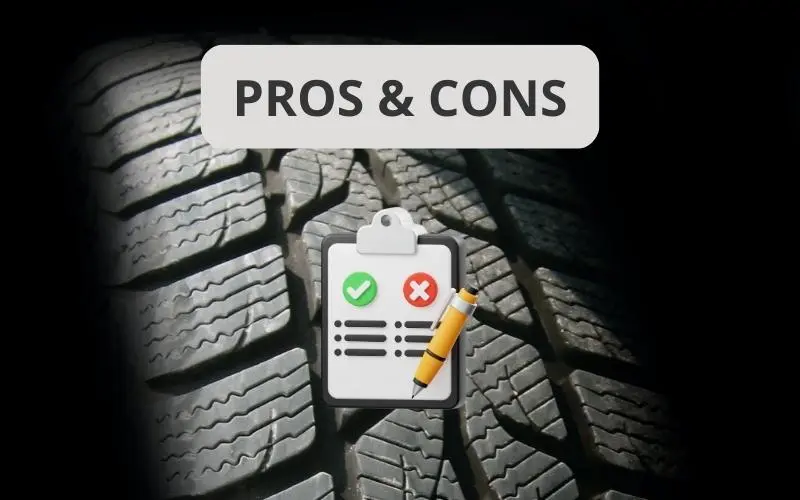
Bridgestone
| Pros | Cons |
| ✔ Wide array of choices | ❌ Confusing product lines |
| ✔ Specialized performance tires | |
| ✔ Some of the best warranty options in the tire industry |
Goodyear
| Pros | Cons |
| ✔ Wide range of tire options for different types of vehicles | ❌ Goodyear tires can be more expensive compared to other brands |
| ✔ Goodyear tires are known for their high quality and durability | |
| ✔ Long history of producing specialized tires for racing |
7. Popular Tires

Here are some notable tires from Bridgestone:
- Potenza RE-71R
- Turanza QuietTrack
- DriveGuard
Some of Goodyear’s best tires are shown below:
- Eagle F1 Asymmetric 3
- Assurance WeatherReady
- Wrangler All-Terrain Adventure with Kevlar
Which Is the Better Brand Overall?

After carefully considering the dry performance, wet performance, snow performance, mileage warranty, average lifespan, pros, and cons of both Bridgestone and Goodyear, I declare Bridgestone as the better pick overall.
With its Bridgestone Potenza RE-71R tire offering outstanding dry performance, Bridgestone Potenza RE980AS+ providing excellent wet performance, and the Bridgestone Blizzak WS80 delivering impressive snow performance, Bridgestone has consistently outperformed Goodyear in these areas.
Additionally, Bridgestone offers a longer average lifespan and a wide array of choices, making it the superior choice for those seeking high-quality and durable tires.